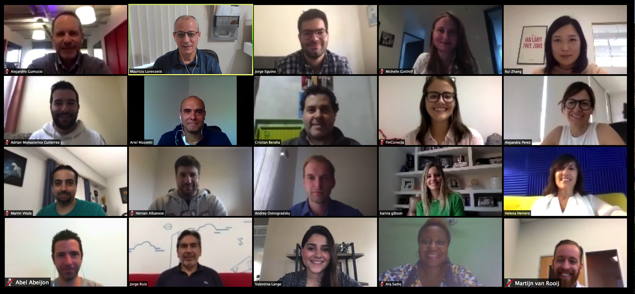Team projects get a bad rep… with good reason. Usually, because it takes a miracle to efficiently delegate tasks across a large group and keep everyone in tune as a team.
Cue the collective groan whenever a team leader assigns a project that requires multiple people communicating with a finesse and clarity that even Oprah would appreciate. Needless to say, that doesn’t happen often.
Making Connections
FinConecta is a global company that leads banks through their transformation into digital organizations by discovering and implementing new business models and services. Working from the bottom up, FinConecta does everything to help banks improve their operational efficiency and customer engagement. The company is also the home of 4WRD, a digital platform that connects banks and fintechs as a global digital marketplace.
Between managing shareholders, liaising with clients, and operating his own internal teams, things get complex quickly. Imagine trying to play a game of Whack-a-Mole with your hands tied. Every new member wanted to bring their internal traditional practices into the new model. Pair this with the fact that all stakeholders work remotely. How in the world do you get anything done? Let alone communicate the fact that something even needs to be done?
Mauricio knew that in order to be successful, they would have to rely on a strong communication strategy.
Don’t Hate the Player, Hate the Game
There are hundreds of players in the project management industry. So how does one pick a winner?
Mauricio got his team to use other popular project management software like Trello, Asana, and Wunderlist, but none of them worked out as a permanent solution. While things were getting done, it was not without effort and overhead. Due to FinConecta’s global reach and complex integration projects, they needed the best prioritizing tool available. Before Workast, the team members needed to go outside of the apps they use everyday to manage their work.
Workast comes out to play #Handled
After announcing to this team that the company would shift from using Asana to Workast, he knew that he had his work cut out for him. There were some initial setbacks.
“Last year, we announced we were moving from Asana to Workast. I scheduled a couple of training sessions. I moved the technology team first, we experimented with our own tasks. Once we were comfortable, we brought everyone on.”
Getting the fintechs and the banks out of their habit of using their own methods of task management was not easy. He had to encourage everyone to use the tool and after a while, it stuck. It also helped that Workast was connected directly into Slack, where the teams were already communicating. This made the transition easier than the apps that came before Workast.
Winning the Break-Up
When managing the teams, Mauricio doesn’t overload them with tasks that they can’t handle. He learned the value of using Workast’s templates, saved reports, tags and seamless integration with Slack channels, making sure that tasks are balanced for each sprint.
“We have a rule — each team member can manage their own activities. It only counts if it’s in Workast.”
“We go to Workast to review their work, progress, and see what their overload is. The tasks have to be in Workast. It works great when it comes to managing capacity and priorities. Especially with so many individual contributors from different organizations and working from remote locations.”
Martijn’s team works a lot differently. Most of his team members do not work remotely. He’s had struggles getting his team to assign everything in Workast. He is currently working on getting his team to create their own tasks in Workast, though he notes that it is a work in progress. For now, he has his own rule to keep everything in sync:
“If it takes more than 30 minutes of work, it has to be in Workast.”
Both Mauricio and Martijn use Workast to keep everything organized and in order. For Martin, the ability of Workast to assign and create tasks is invaluable. He uses the ‘My Tasks’ feature to check out what his collaborators are up to. He loves that it helps him to keep a clear overview of what is due for the day and how it helps to prioritize different issues. For example, he notes that a customer having a problem has a higher priority than an HR task.
“It gives me peace. We have so many things in different functions. Managing shareholders, fintech teams, HR, etc. If I didn’t have this solution, it gets very messy. Workast is really important, it’s one of the key dashboards on my computer.”
Mauricio appreciates the simplicity of organization. Workast allows you to organize tasks and projects using tags. He notes that tags are one of his favorite features, especially when using them with reports. The ability to search and create reports are crucial to his side of the business and helps to keep everything organized properly. Beyonce would be proud.
Teamwork makes the dream work
As a fast-growing company, FinConecta has utilized Workast in various ways. Now they are seeing how it can be applied to other aspects of their business, including possibly offering it as a fintech solution for banks to manage their internal initiatives.
“We will use Workast to manage multiple commitments and requirements. We want to manage every process included in the implementation of an application to a bank. Everything will happen through Workast. We want to be a unique culture.”
And that’s how you win a break-up. What about you? Have you had to say “Thank you, next” to a project management software? We want to know about it! Tell us all about it. Tweet us @workast with #WonMyBreakUp to let us know!
Looking for the best project management app? Give us a try today.


